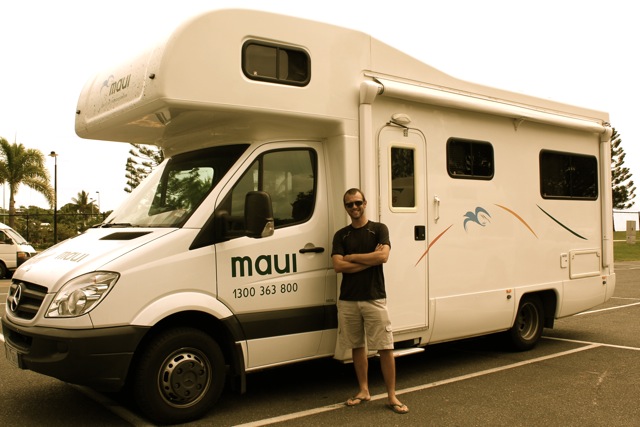From Hong Kong to Hanoi: An Overland Journey
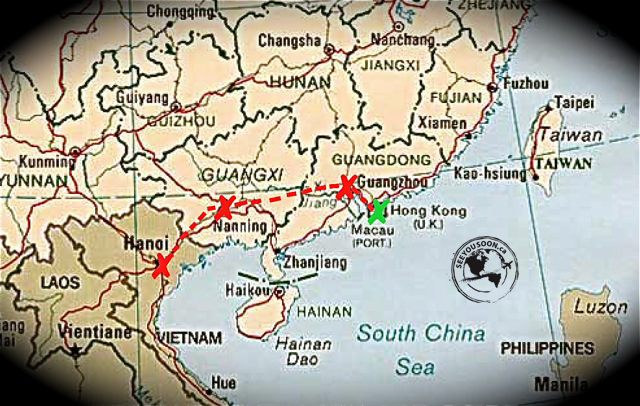
Even before Tristan and I began our trip, I had started researching how we would cross over from China into Vietnam. Since we were going to be making the trek overland to save costs, we needed to figure out the best route, mode of transportation, and visa requirements for Vietnam. I searched Google and perused chat forums to see if others had done it and what was involved for them. But everything seemed outdated (posts from 2008) and no one really wrote exactly what they had done and what their experience was.
This was our first big hurdle of our trip and unfortunately instead of facing it head on right away we kept pushing it out of our minds until we really had to do something about it. With about 1 week to go until we would be leaving China and saying “good morning Vietnam,” we sat down one night and hammered it out.
Believe it or not, things came together quite smoothly. We decided we were going to do the entire trip by train (instead of a combination of train and bus) with our journey beginning in Hong Kong. On paper we were looking at a two-day trek to Hanoi with one train to get us out of Hong Kong and back into China, and two overnight trains after that. But there was still a little bit of uncertainty since we wouldn’t be able to purchase any of our train tickets until we arrived in the city we would be departing from (an unfortunate downside of train travel in China).
So here’s a recap and some information for those who want to do the same trip as we did:
Visa
In my research, I found that we would need to get a 30-day tourist visa for Vietnam but the method of obtaining one depended on how we would be entering the country. If you fly into Vietnam you can apply online through a travel agency that specializes in Vietnamese Visas for an “on-arrival visa”. This means that you pay in advance for your visa but get the physical visa when you arrive in the country at the airport. But remember, this only applies if you’re flying into the country.
Since we knew we wouldn’t be flying our options were a little slimmer. There was some information online about being able to get a visa at the border, but stories of border crossing corruption in South-East Asia left us wanting to avoid experiencing any “misunderstandings” at the boarder. Instead we decided to get our visa in advance at the Vietnamese Consulate in Hong Kong.
You can get your visa within 3 business days or 30 minutes for rush service. We arrived within half an hour of the consulate opening on a Wednesday morning but were told the 3 business days would mean we could pick up our visas on the Monday. Except we were leaving on Saturday… We were slightly perturbed that the Wednesday didn’t count as a business day and unfortunately had no other choice but to get the 30 minute rush service at $500HKD a pop (roughly $65 Canadian dollars each). While we paid quite the premium for the visas, we had them within 30 minutes and could continue exploring Hong Kong with no interruptions.
From Hong Kong to Guangzhou
In order to get things started, we had to travel back into China via Guangzhou. It’s important to note that if you plan to do the same thing, you’ll need to have a double entry visa for China if you visit Hong Kong during your travels in China.
We made our way to Hung Hom Train Station by subway (where the East and West Rail lines meet) and bought our tickets at the station ($190HKD each, roughly $25CDN). We cleared Hong Kong immigration and had our bags scanned before we boarded the train. The train took only 2 hrs to arrive in Guangzhou East Station and was probably the best train ride we’ve had. The train had two floors, comfortable plushy chairs, wifi access for purchase and we were even given a complementary bottle of water. We almost didn’t want our time on the train to end!
There are twelve trains daily leaving each hour, but you’ll want to take one of the earlier trains. Click here for a list of departure times for trains between Hung Hom (Hong Kong) and Guangzhou East (China).
Guangzhou to Nanning
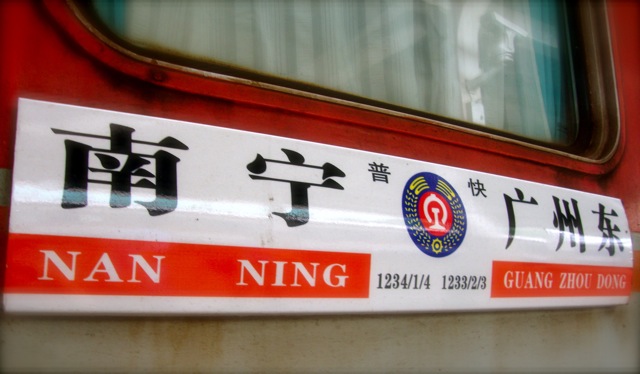
The second leg of our journey took us from Guangzhou to Nanning. We bought our tickets directly from the Guangzhou East Railway Station ticket window, though we had to wait for over an hour in line. To make things easier for us (and the possibility that the ticket agent didn’t speak any English) we wrote on a piece of paper our departure and destination city name plus the date we wanted to travel on. We were lucky and ended up with an English speaking agent who was able to book us one upper and one lower bunk in a soft sleeper cabin for a total of 560rmb (close to $90 CDN) for the both of us.
The train (#1232 for future reference) departed at 19:40 and arrived in Nanning at 09:00 the next day.
Nanning to Hanoi
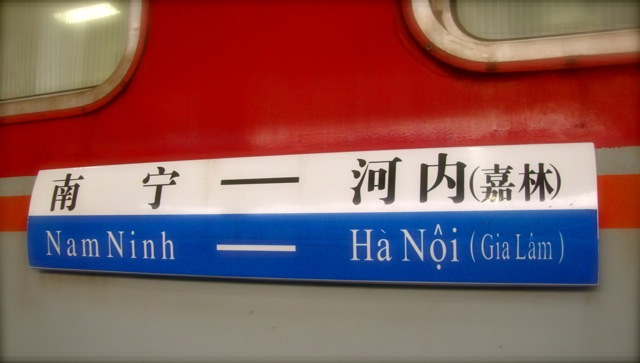
When we arrived in Nanning, the first thing we did was purchase our tickets for the third and final leg of our journey. I had read online about going specifically to ticket window #16 to purchase our tickets to Hanoi. I wasn’t quite sure what was so special about this particular window but we did it anyways…and it worked.
Again, we had no problems booking our tickets for the train departing that night. We got lower bunk tickets in the soft sleeper cabin for 248rmb each (roughly $40 CDN). The ticket agent asked to see our passports and processed our tickets within 5 minutes. The train (#T8701, runs daily), departing at 18:45, would take us directly to Hanoi with one initial stop within China and then a stop to clear Chinese Immigration in Ping Xing and another stop across the border to clear Vietnamese Immigration.
Since we arrived in Nanning at 9am and weren’t leaving until after 6pm that same day, we had about 9 hours to kill. We originally thought we would just hang out at the train station, but thought twice about it after realizing we couldn’t get back into the train station until 2 hrs before our train would leave and there wasn’t much around the area to help us pass the time.
Instead we ended up walking down the street and popped into one of the larger hotels. They had a computer and Internet access for us to book our accommodation for Hanoi, along with some email check ups to pass the time. We then spent another hour in their lobby enjoying a cup of coffee, the air conditioning, and comfortable chairs.
Between our time in the hotel and finding some food to eat, we managed to fritter our layover time away. We spent the remaining couple of hours in the train station waiting area playing a game of scrabble.
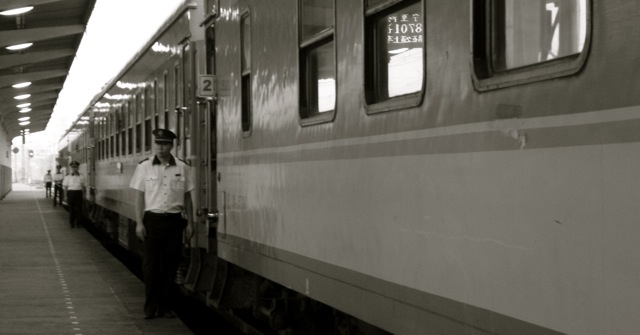
Our train ride to Hanoi was a breeze but lacked any chance of getting any sleep. At about 10:15pm our train stopped in Ping Xing where Chinese Immigration Officers boarded the train. We had to turn our passports over to them and then we all had to get off the train with our luggage, have our bags scanned, and wait in the holding area. About an hour later, we were all cleared and were able to return to the train. Our passports were then given back to us with exit stamps in place.
Then at about 12:30am we stopped again, this time on the Vietnamese side of the border. Again we all had to get off the train and enter the holding area. We turned over our passports to the immigration officers and waited to be cleared. The group of 20 or so of us just sort of hung out in the waiting area. There were no questions asked of us and we didn’t have to have our bags scanned. About 20 minutes later the immigration officer called each person individually and handed back our passports. We were then able to get back on the train and departed about 1 hour after we had first arrived. The train then continued on towards Hanoi and arrived at 5am local time (an hour behind China). We didn’t get much sleep at all on the train and felt quite bleary-eyed pulling into Gia Lam Station, Hanoi, before the sun had even come up.
Our first order of business was to get a taxi to our hostel. We had already been informed by our hostel that we shouldn’t pay any more than $3-4 USD, but we settled on offering the first person who approached us $5. We figured that was more than a fair price. Well, he didn’t think so…saying he wanted $50. No more than 5 minutes on the ground and we were already experiencing our first rip-off attempt. We laughed, said “$50?”, and proceeded to just walk away. He then came back and said, “ok, for you special price today, $10”. We stayed firm and said $5, again, to which he finally agreed.
He got us to our hostel and luckily we were able to get into the building. We couldn’t check in, as the place wasn’t actually open yet, but we sat in the reception waiting area, watched the sun come up and checked some emails. We were given complementary breakfast around 8am and were able to check into our room by 9am.
While it was a long, 2+ day trek from Hong Kong to Hanoi we managed to do it for a third of the price than if we would have flown it.
Here’s Our Breakdown:
| Train # | Departure | Arrival | Price | |
| Day 1: Hong Kong to Guangzhou East | T826 | 13:10 | 15:01 | $380 HKD($50 CDN) |
| Day 1: Guangzhou East to Nanning |
1232 |
19:40 | 09:00 | 560rmb($90 CDN) |
| Day 2: Nanning to Hanoi |
T8701 |
18:45 | 05:00 (local time) | 496rmb($80 CDN) |
| Total (for 2) | $220 CDN |
What You Need To Know: It’s important to research a place to stay in Guangzhou and Nanning in the event you can’t get on the train leaving that night. And have some snacks and water packed for your train rides. This travel plan is obviously designed for those who want to save money, and aren’t limited by time.
